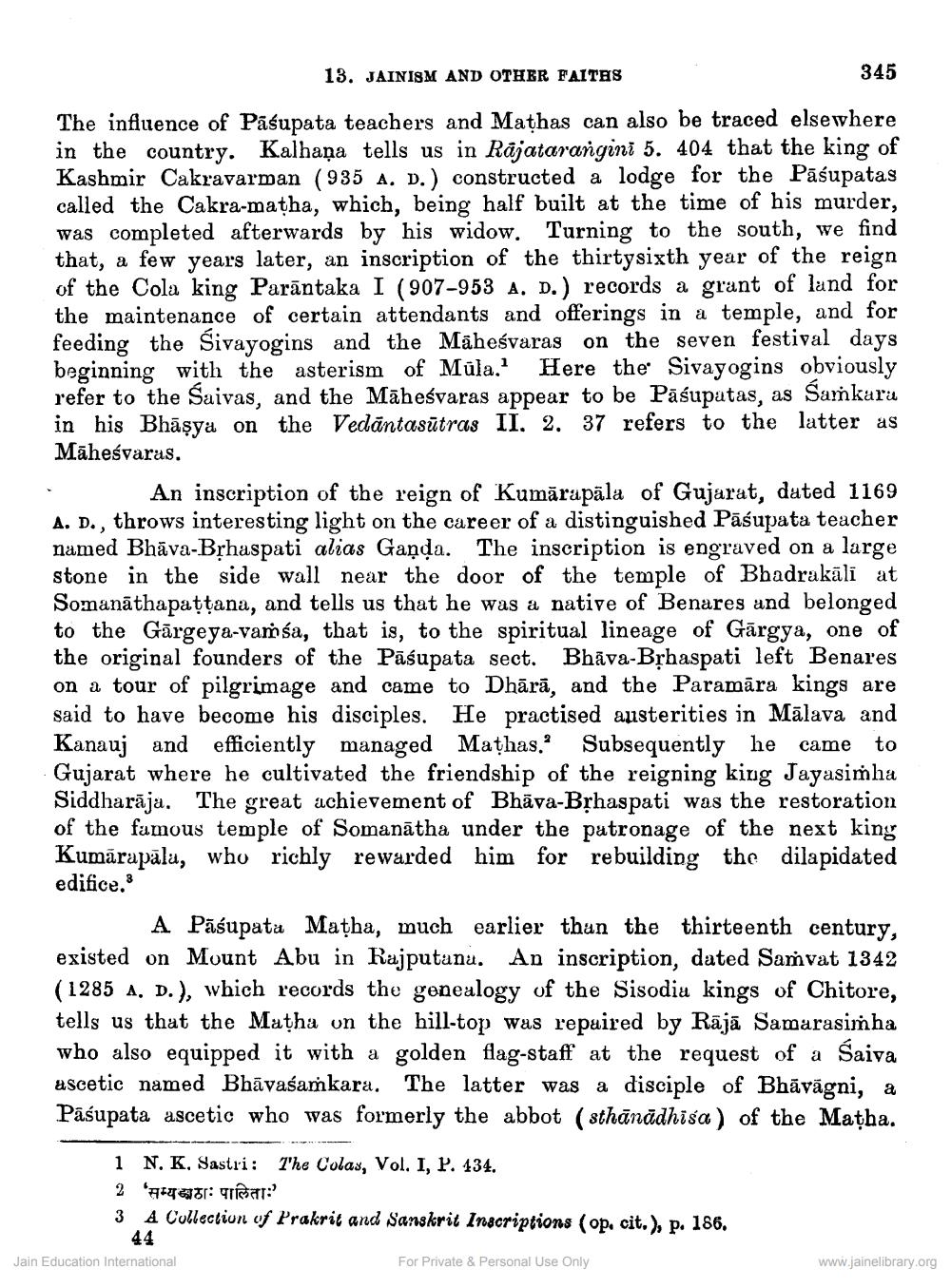________________
13. JAINISM AND OTHER FAITHS
345
The influence of Pāśupata teachers and Mathas can also be traced elsewhere in the country. Kalhana tells us in Rajatarangini 5. 404 that the king of Kashmir Cakravarman (935 A. D.) constructed a lodge for the Pāśupatas called the Cakra-matha, which, being half built at the time of his murder, was completed afterwards by his widow. Turning to the south, we find that, a few years later, an inscription of the thirtysixth year of the reign of the Cola king Parāntaka I (907-953 a. D.) records a grant of land for the maintenance of certain attendants and offerings in a temple, and for feeding the Sivayogins and the Māheśvaras on the seven festival days beginning with the asterism of Müla. Here the Sivayogins obviously refer to the Saivas, and the Māheśvaras appear to be Pāśupatas, as Samkara in his Bhāșya on the Vedāntasūtras II. 2. 37 refers to the latter as Māheśvaras. . An inscription of the reign of Kumārupāla of Gujarat, dated 1169 A. D., throws interesting light on the career of a distinguished Pāśupata teacher named Bhāva-Bphaspati alias Gaņda. The inscription is engraved on a large stone in the side wall near the door of the temple of Bhadrakāli at Somanāthapattana, and tells us that he was a native of Benares and belonged to the Gārgeya-vamśa, that is, to the spiritual lineage of Gārgya, one of the original founders of the Pāśupata sect. Bhāva-Bșhaspati left Benares on a tour of pilgrimage and came to Dhārā, and the Paramāra kings are said to have become his disciples. He practised austerities in Mālava and Kanauj and efficiently managed Mathas. Subsequently he came to Gujarat where he cultivated the friendship of the reigning king Jayasimha Siddharāja. The great achievement of Bhāva-Brhaspati was the restoration of the famous temple of Somanātha under the patronage of the next kiny Kumārapālu, who richly rewarded him for rebuilding the dilapidated edifice.
A Pāśupata Matha, much earlier than the thirteenth century, existed on Mount Abu in Rajputani. An inscription, dated Samvat 1342 (1285 A. D.), which records the genealogy of the Sisodiu kings of Chitore, tells us that the Matha on the hill-top was repaired by Rājā Samarasimha who also equipped it with a golden flag-staff at the request of a Śaiva ascetic named Bhāvaćamkara. The latter was a disciple of Bhāvāgni, a Pāśupata ascetic who was formerly the abbot (sthānādhisa) of the Matha.
1 N, K, Sastri: The Colas, Vol. I, P. 434. | 2 ng645 : Ita:
3 A Collection of Prakrit and Sanskrit Inscriptions (op. cit. ), p. 186.
Jain Education International
For Private & Personal Use Only
www.jainelibrary.org




